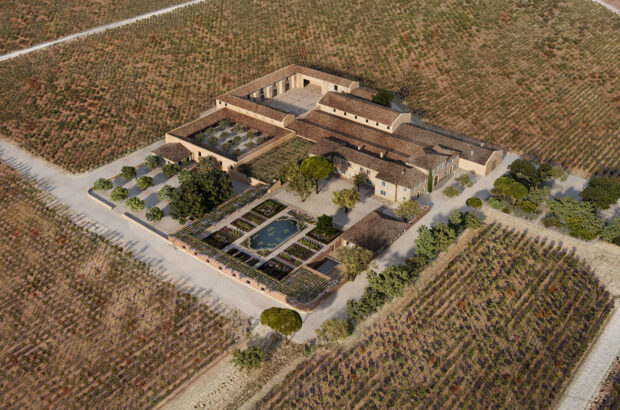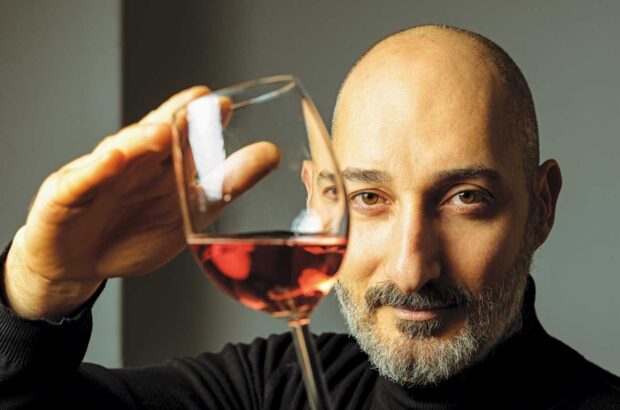Vintage port is often held up as the most aristocratic of wines. But RICHARD MAYSON argues that a 20-year-old tawny can offer greater overall drinking pleasure.
Every great wine is made in the vineyard – with one notable exception. A great tawny port is also made in the tasting room.
Wines put aside to become part of this chain of aged tawnies are chosen from among the finest ports, usually after making up the potential vintage or single-quinta vintage blend or lote. The base wines, destined to develop into graceful, mature tawnies, combine stature with elegance and finesse.
One of the most graceful of wines, tawny port comes in a bewildering number of different guises, and has its own in-built hierarchy. The apogee, to my mind, is 20-year-old. It represents the epitome of balance and poise, combining the primacy of fine Douro fruit with the secondary complexity that comes from ageing in cask. But enough of the sexing up. For although they are totally different in style, I am not alone in ranking the finest 20-year-olds just as highly as the best vintage ports.
Burmester, Fonseca, Niepoort, Noval, Sandeman, Taylor and Ramos Pinto all produce 20-year-old tawnies in the premier league. The port shippers themselves often prefer to drink a 20-year-old in preference to vintage. The refinement of a 20-year-old tawny befits the climate and temperament of the Douro better than the heftier, bottle-matured wines which are more at home in cooler climes.
David Guimaraens, the winemaker responsible for blending Taylor’s trophy-winning 20-year-old in this year’s Decanter World Wine Awards (as well as wines for Fonseca, Croft and Delaforce), has no hesitation in opting for 20-year-old tawny as his favourite port.
https://www.decanter.com/wine-reviews-tastings/fonseca-port-six-of-the-best-283254/
‘The secret of a good fortified wine,’ says Guimaraens, ‘is that it should taste sweet but finish dry. This is the big difference between port and other lookalike fortified wines.
‘The secret of a good 20-year-old tawny is having the right balance between age and freshness, making the wine both drinkable and affordable. Ten-year-olds are nice but another 10 years on top is great. By 30 and 40 years, age starts to predominate and there is not much flexibility to blend in freshness. Twenty-year-old tawny has just the right balance.’
Charles Symington, winemaker for his family company which comprises Dow, Graham and Warre among others, agrees.
‘Twenty-year-old has age but it also has the best balance,’ he says. ‘It is close to the ideal. It already has the power of age, but it is not overpowered by age like many 30 and 40-year-olds. Ten-year-old is good if you like a more fruit-driven style but the level of complexity in a 20-year-old is far greater.’
So where do the various aged ports stand in the tawny port pyramid? Starting at the foot, there’s the so-called ‘tawny’ that is little more than attenuated ruby, most of which is shipped to France. On the next level there is a category designated ‘reserva’, defined by the Port and Douro Wine Institute (IVDP) as ‘a wine of good quality obtained by blending wines of different ages which produce a wine with a complex aroma and flavour’. In practice most of these wines are premium rubies like Cockburn’s Special Reserve or Warre’s Warrior. But there are a number of wines like Ferreira’s Doña Antónia Reserve or Graham’s Finest Reserve which are both wood aged with a view to the wines taking on the characteristics of a young tawny.
Then there is the relatively new category of tawny reserve, created for wines that have spent at least seven years in wood. Examples are still few and far between, but watch out for them as a good, affordable introduction to aged tawny. Niepoort’s Senior, as good as any in this newly defined category, has been around for years.
The real thrill of a great tawny comes from those wines bottled with an indication of age. Four are permitted: 10, 20, 30 or 40 years old. The component wines used in blending aged tawnies are mostly sourced from A/B grade vineyards in the Cima Corgo or Douro Superior, but there are a number of properties in the Baixo Corgo such as Quinta do Vallado and Quinta de Santa Eufemia which are making some fine aged tawnies of their own.
The main shippers look to maintain their own house styles, but it is the ageing process which is of crucial importance to the style and character of a tawny port. In small casks or pipes of between 600 and 640 litres, the wine undergoes a slow process of oxidation and esterification as the colour fades and ethyl esters and acetals develop in the wine. To use the local parlance, the formation of these volatile components – known colloquially as vinagrinho (little vinegar) – are directly influenced by the ambient storage temperature and the rate of evaporation.
A tawny port aged in the Douro ages differently and more rapidly than that aged in the cooler conditions of Vila Nova de Gaia where most of the shippers’ lodges are to be found. Here, annual evaporation tends to be no more than 1% or 2%, whereas in the Douro the figure is around 3%. One single quinta making 10-year-old tawny estimates that by keeping the wine up in the Douro, the ageing process is accelerated by around 30%. A higher rate of evaporation serves to concentrate the natural residual sugars and the higher temperature produces wine with a distinctive toasted richness, known as ‘Douro bake’.
https://www.decanter.com/wine-travel/spain-portugal/douro-travel-guide-352743/
Provided the wine has been well nurtured, a certain amount of bake can be a positive characteristic in a mature tawny. Many shippers use a small component of Douro-matured wine in their aged tawnies.
Racking also plays an important part in development of a tawny, and provides the tasting room with a regular opportunity to monitor the character and evolution of each pipe. The tasting and blending of tawny port is a continuous process, the aim being to produce a wine that not only conforms to the house style but is consistent over time.
Wines set aside initially are often marked with the year of the harvest (colheita), but as the shipper makes up new blends, followed by blends of blends, the characteristics of the individual wines gradually meld into the house style. Lighter, earlier-maturing wines will go towards a 10-year-old tawny whereas richer, more structured wines are held back for older blends.
Stocks of tawny are generally driven by anticipated sales and the onus is on the shipper to look 40 years ahead in order to lay down the right amount of wine. Niepoort, whose 20-year-old tawny won a Silver medal in this year’s Decanter World Wine Awards, calculates that it bottles the equivalent of about 12 pipes of 20-year-old each year and just three pipes of 30-year-old. These stocks have to be replenished on a regular basis. However, the final tawny lote may be made up from anything between 10 and 50 different components, with younger, fresher, fruit-driven wines balancing older, more mature wines that have gained more complexity from extended ageing in cask.
There has been an unwelcome tendency for some 20-year-old tawnies to be marred by an excess of ‘Douro bake’, a characteristic that seems to be given credence by the tasting panel at the Port and Douro Wine Institute, which has to approve each and every lote of Tawny. The reason that Taylor’s scored so highly in the Decanter World Wine Awards was precisely because the wine had great poise, displaying remarkable freshness as well as age.
‘It is sometimes easier to acknowledge the age of a 20-year-old if it has a brown colour and bake. If it is red, it is often considered too young,’ says Guimaraens. ‘Our success comes from maintaining the average age but also from blending in very small quantities of younger wine which gives vivacity.’
Unlike vintage port, where the power of the fruit comes first and foremost, tawny port is an exercise in fine-tuning to end up with the most seductive and beguiling of wines.
What to look for in a 20-year-old Tawny Port: The colour should range from pale brick red in the centre to orange-amber-tawny on the rim. The aromas are some of the most seductive of any wine, with dried fruit (apricots, figs and a touch of sultana) and toasted almonds and brazil nuts. Fruitcake springs to mind. The wine should lift itself in the glass but without the noticeable volatile component (vinagrinho) which is often found in a 30- or 40-year-old. On the palate, the wine should be supremely refined and silky-smooth with all the tannin of youth having faded away. At the same time, the fruit retains freshness and vivacity. Sweetness is paramount and a 20-year-old will always be slightly sweeter than a 10-year-old without being in any way unctuous. The finish will be clean, cool and above all supremely fresh and invigorating, a sensation perhaps not immediately associated with fortified wine.
The second, fully revised and updated edition of Richard Mayson’s book, Port and the Douro, is published by Mitchell Beazley, priced £20.







